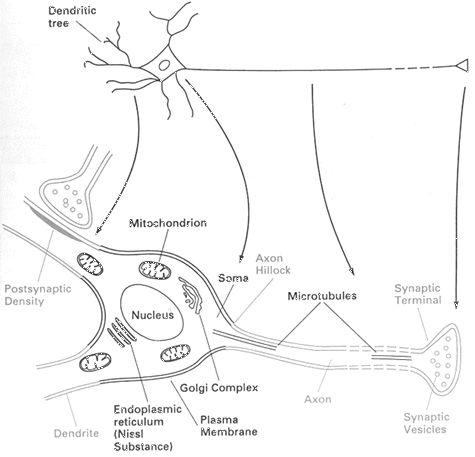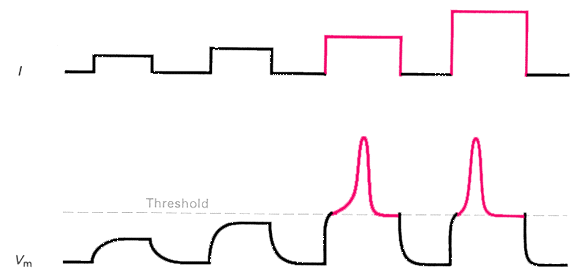 Neurons are the basic cellular unit of a nervous system. A neuron is a single cell consisting at the largest level, a soma (body), dendrites, and an axon (see Figure 1). By controlling ion concentrations inside the cell relative to the outside, the neuron is able to receive and transmit electrical signals through the transfer of charged ions. A single neuron contains thousands of ion channels and pumps that move ions across the cell membrane, for the purpose of signaling. A complex system like the human brain contains billions of neurons.
Neurons are the basic cellular unit of a nervous system. A neuron is a single cell consisting at the largest level, a soma (body), dendrites, and an axon (see Figure 1). By controlling ion concentrations inside the cell relative to the outside, the neuron is able to receive and transmit electrical signals through the transfer of charged ions. A single neuron contains thousands of ion channels and pumps that move ions across the cell membrane, for the purpose of signaling. A complex system like the human brain contains billions of neurons.The magic of interneuron signaling is contained in the action potential. When ion concentrations change within the cell (usually cause by injecting a depolarizing current, such as an action potential from a previous neuron) the membrane voltage changes to reflect the new chemical potential difference across the membrane. Should the membrane voltage be above some threshold value, it will fire an all-or-nothing action potential (see Figure 2). The action potential has the same shape and duration for any given cell, but this can vary from cell to cell. The decision-making ability through the use of threshold and action potential, is what allows for signal processing and motor control to be possible. The decision making is from summing of all the inputs to a single cell, and then subjecting it to a threshold function which generates a binary response.

Figure 2 (The Neuron, pg38, Fig 2-4)
To model every detail and chemical process of a neuron would be computationally overwhelming and does not lead to significant qualitative or quantitative benefits. The model that I am using is a bit abstract from an actual biologically realizable cell, but it produces output consistent with its input with a real neuron. It is based upon the Hodgkin-Huxley equations for a single potassium channel, with some simplifications (see Neuronal Modeling).